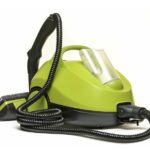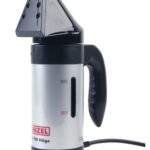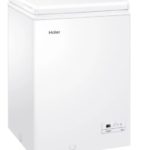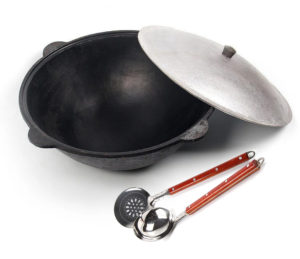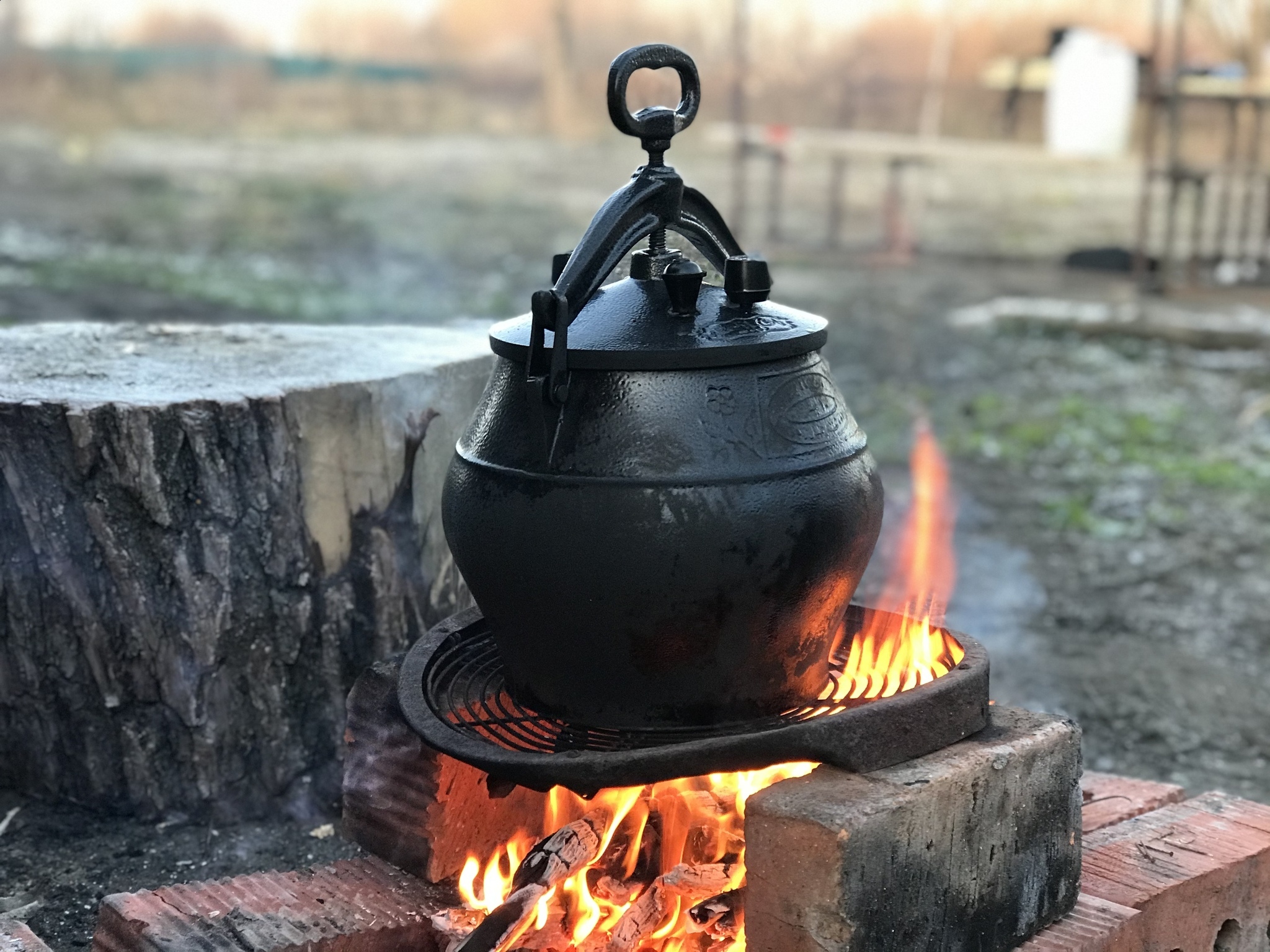Types of cauldrons
In most cases, it may seem that the cauldron is a rather primitive design, and the models are not at all different from each other. Is it just the obvious nuances? For example, volume and material of manufacture. But the cauldron also has other characteristics, which, in fact, influence its varieties.
The content of the article
Types of cauldrons depending on parameters
There are few types, but they all differ in material and volume (as already mentioned), as well as in wall thickness and shape. Some options are distinguished by purpose. For example, cooking over an open fire or on a stove, but this is a purely individual approach, since the person’s personal preferences are more influential here. Let's figure out how cauldrons differ from each other.
According to the material of manufacture
The main raw materials are cast iron, aluminum, copper, steel. The last two options are not so popular: they require complex and delicate care and there is a risk of corrosion or toxic metal compounds getting into food.
Cast iron
A cast iron cauldron meets all the requirements that can be presented to this type of kitchen utensil - it heats ingredients evenly, distributes heat correctly and retains it inside the pot for a long time. Because of this, the dishes turn out to be very rich, juicy, with an unsurpassed soft taste.
For some reason, it is believed that the older the cast iron pot, the tastier the food will be. It's strange, but it's true. It is often argued that over time a very thin film forms on the walls of the pot, which is not washed off even when washing dishes. Thus, all the pores of the cauldron inside are filled with natural fat, and this helps prevent the food from burning - this kind of non-stick coating is almost impossible to clean. Although this is a plus!
Advantages:
- long service life;
- uniform heat distribution inside the container;
- democratic value;
- does not require complex care;
- Maintains the temperature of cooked dishes for a long time.
Flaws:
- rust may form;
- often quite heavy.
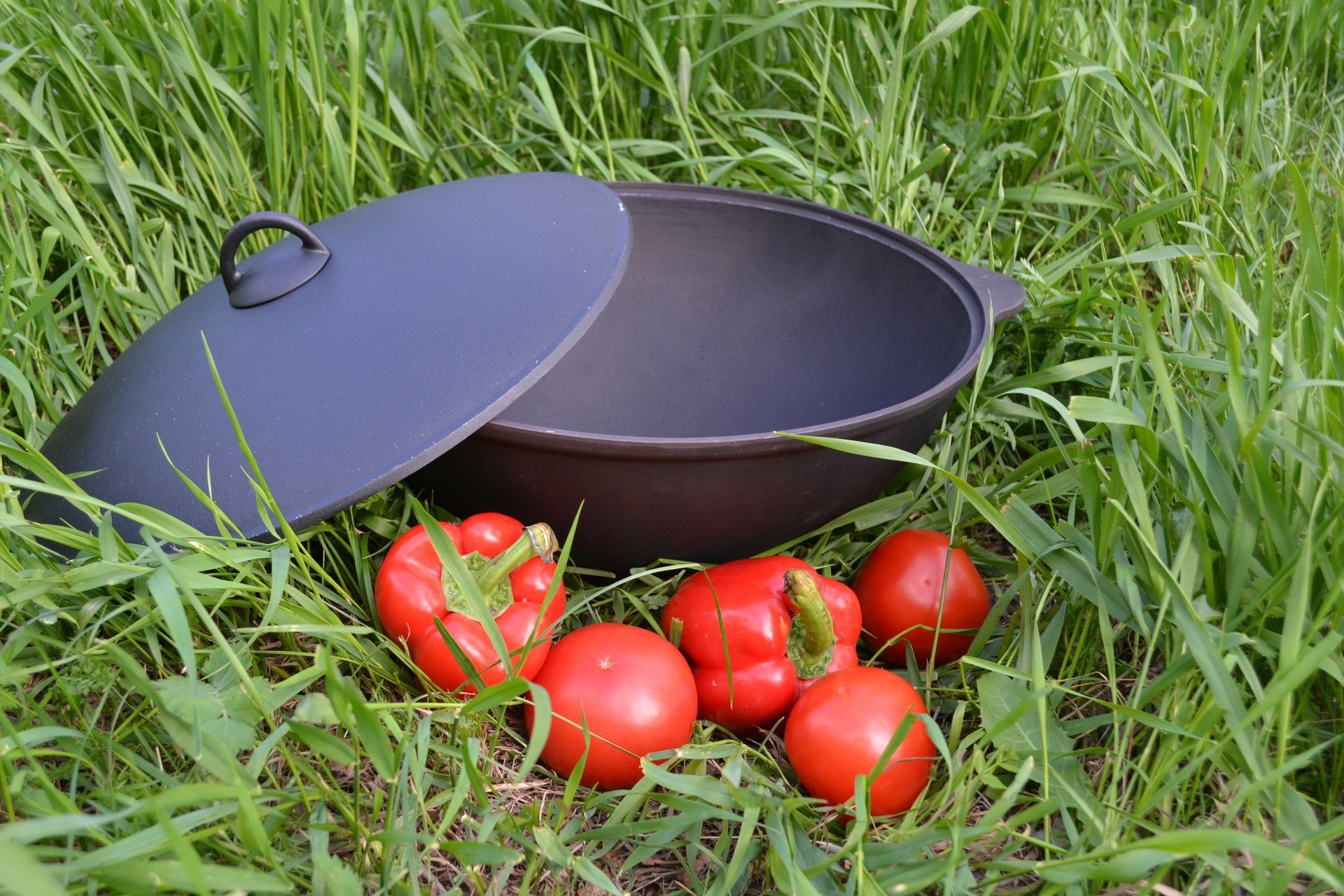
Aluminum
Such models are in demand among those who love outdoor trips and cannot imagine a vacation without food cooked over a fire. Aluminum cauldrons are very light, which allows you to take them with you on hikes, or just spend time with your family somewhere in a natural area.
The ingredients heat up quite quickly, but they cool down just as quickly, and this is completely unacceptable when preparing oriental dishes, for which the cauldron is, in fact, intended.
Food will not simmer in an aluminum pot. They're more likely to be fried.
An essential feature of this cauldron model is that it is impossible to leave cooked food in it, since the oxidation process begins too quickly - it is better to transfer it to another container.
As for care, such models will have to be washed with extreme caution. In addition, aluminum is a rather brittle material and can easily be bent or left with a dent.
Advantages:
- lightweight;
- ease of transportation;
- heats up quickly;
- low cost.
Flaws:
- easily deformed;
- requires delicate care;
- cools down quickly.

Copper
This metal is very rare today. And this applies not only to the manufacture of cauldrons, but also to all kitchen utensils in general. The reason is that copper compounds are very toxic, and copper itself is susceptible to rust. Using and caring for a cauldron made of this metal requires a lot of effort, time and, in fact, finances. Not all products are suitable for cleaning it - you will have to buy expensive formulations based on natural substances.
As for the features, copper also quickly heats up food, but, like aluminum, it cools down quite quickly. Since a copper cauldron will not retain heat for a long time, this is a significant disadvantage for those dishes that are often prepared in it.
Advantages:
- a light weight;
- fast heating;
- fast cooking process.
Flaws:
- releases toxins;
- only delicate care is needed;
- rust may form;
- Copper cauldrons are made with thin walls, which often leads to deformation of the metal.
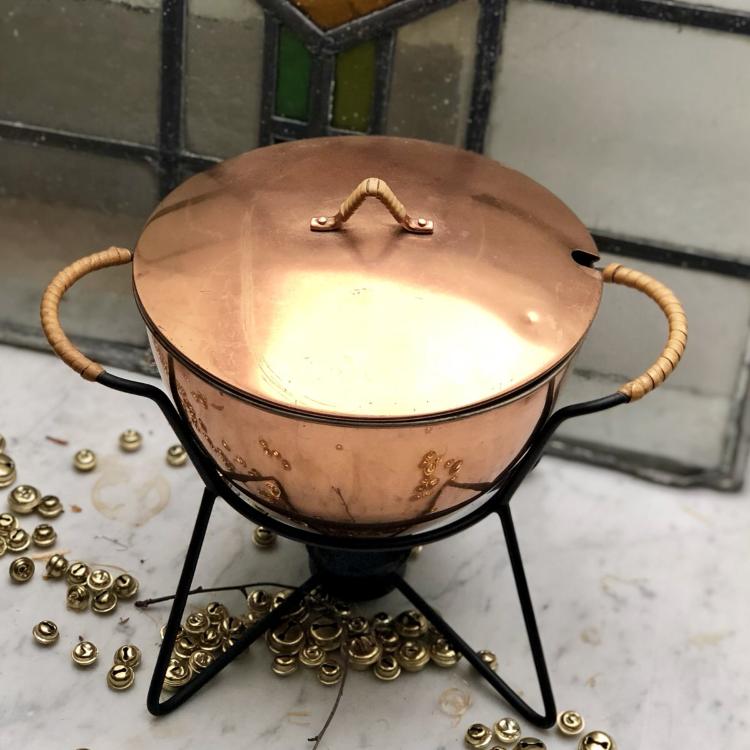
Coated steel
The coating can be different - Teflon or enamel. The choice depends on the person - what he likes and what he is used to.
In fact, the properties of steel are very similar to cast iron, but there are significant disadvantages that specifically concern the coating.
Cast iron cauldrons are not afraid of high temperatures and overheating, but coated steel boilers are unlikely to “survive” this - the top layer will gradually peel off, which will lead to cracks. Such kitchen utensils do not look very attractive, and cooking in them is extremely dangerous!
Advantages:
- non-stick properties - food will not burn.
Flaws:
- delicate coating that cannot boast of a long service life;
- produces little steam.
Many dishes that are usually prepared in such dishes require constant stirring. And Teflon coating, as is known, does not tolerate unnecessary slipping on its surface. Especially with inappropriate tools.
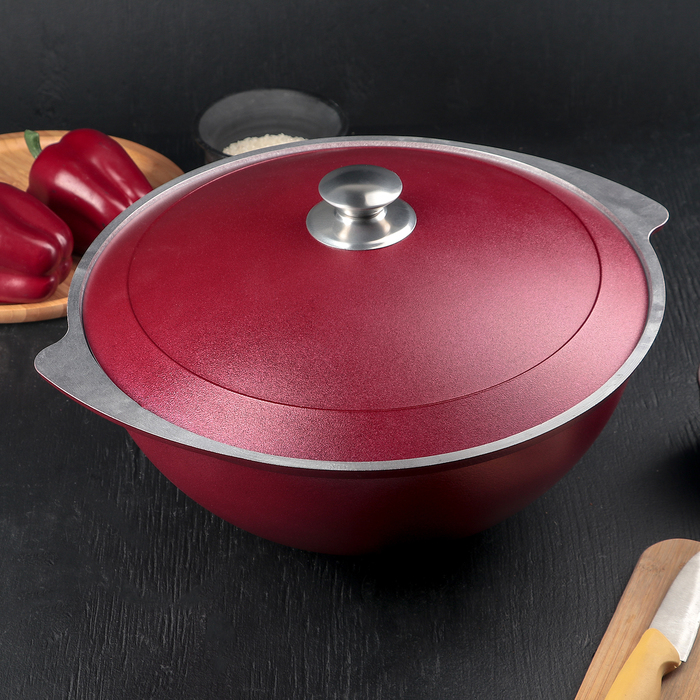
To size
Traditional sizes in liters:
- 2-4 - for small families, convenient for home use;
- 5-8 - for a company of 5-8 people;
- 9-20 - for camping, country gatherings, hiking, for a number of people from 10;
- the largest options - from 30 to 200 liters - are more intended for cafes and restaurants.
By wall thickness
Regardless of what kind of cauldron you decide to buy, it is very important to pay attention to this parameter. The ideal option is 3-5 mm, but this figure can vary both down and up.
Remember that the thicker the walls of the cauldron, the better it will distribute heat and retain it.
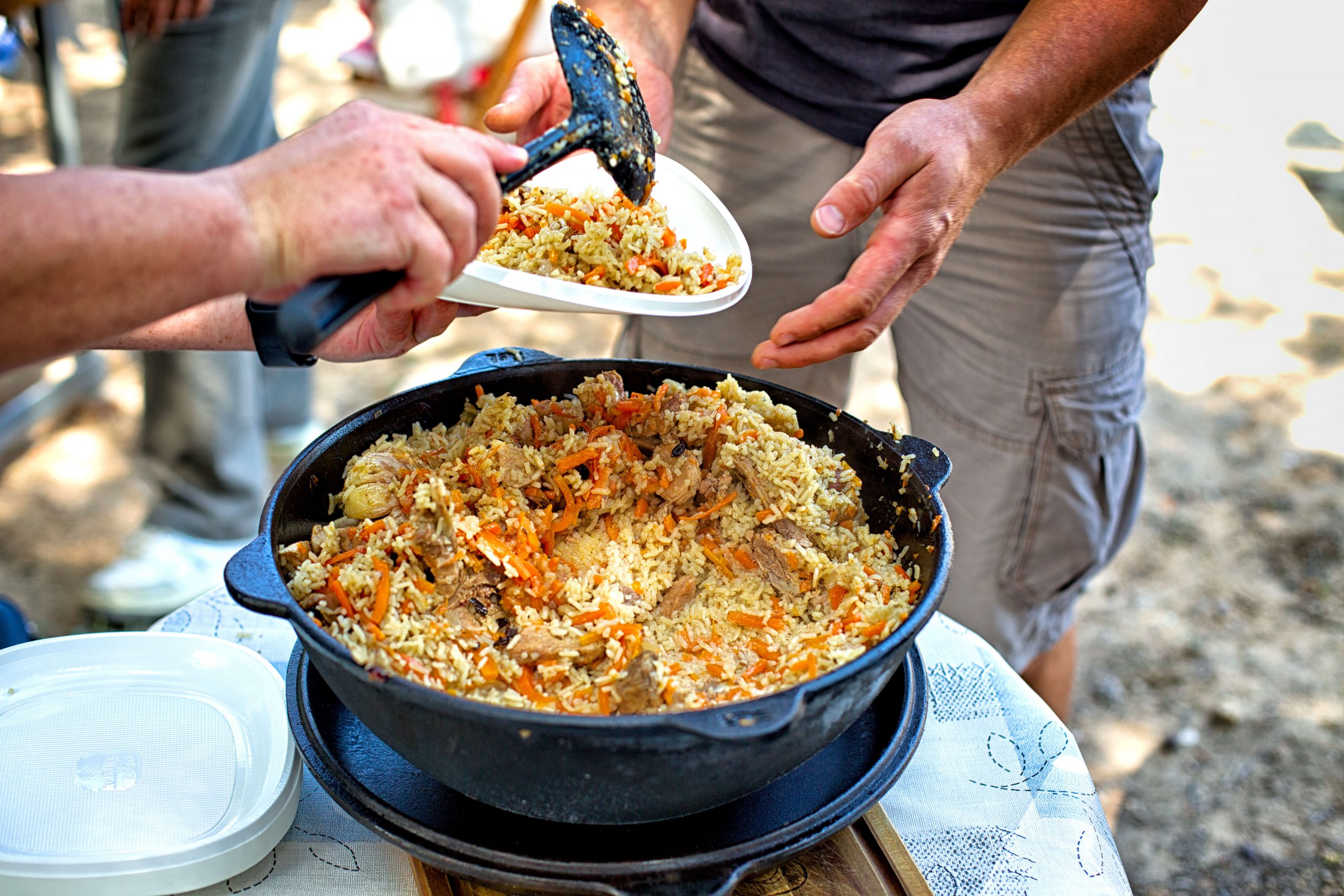
By shape
In fact, the cauldron has one specific feature - the shape of the bottom. It is rounded, hemispherical, turning into the walls of the pot - this is how a traditional cauldron should be. But this design makes the dishes not entirely stable, which led to the production of pots with a smooth or completely flat bottom - an adaptation for kitchen stoves.
When choosing a cauldron, pay attention to the handles. They must be cast.
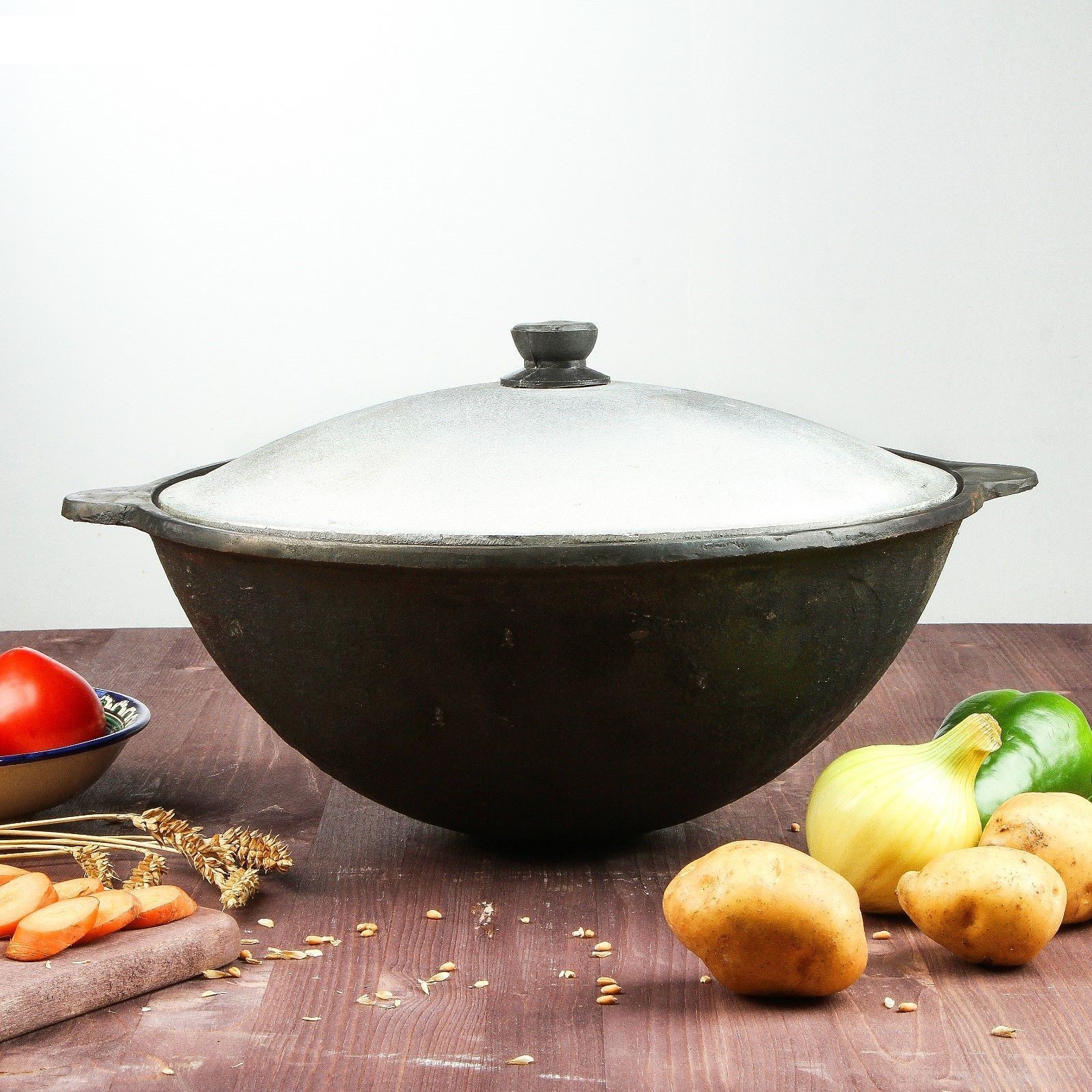
There are also quite original designs, for example the Afghan one. But that's a completely different story...

